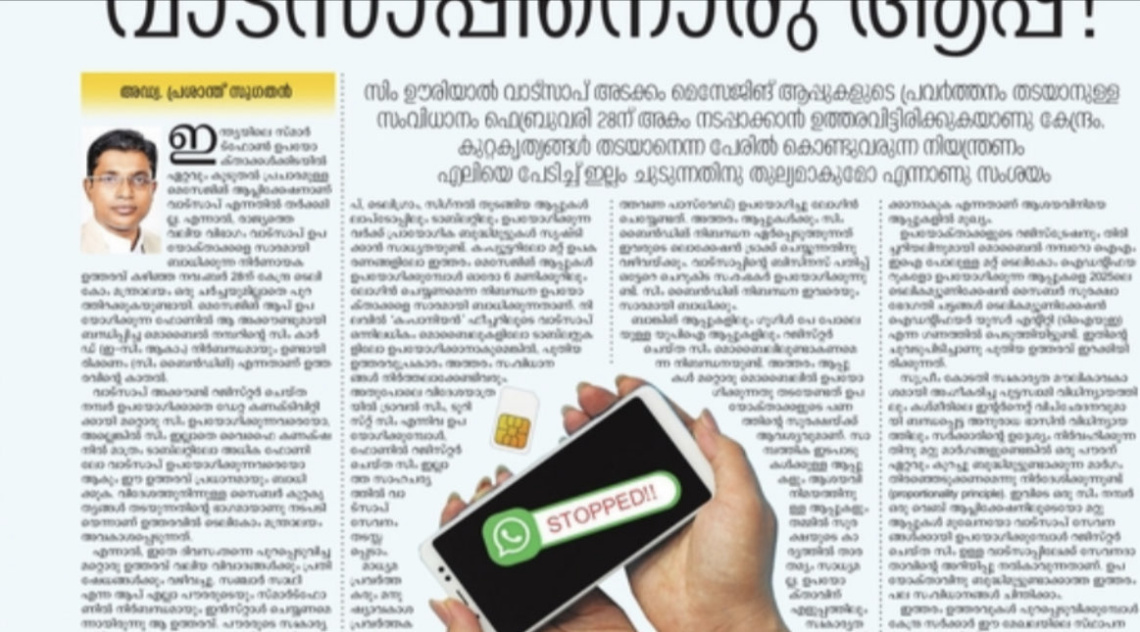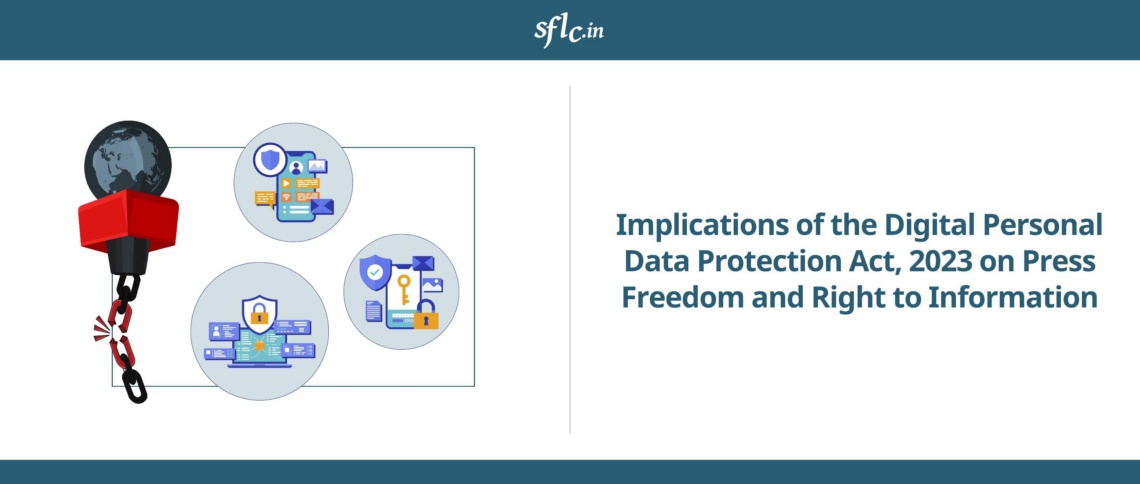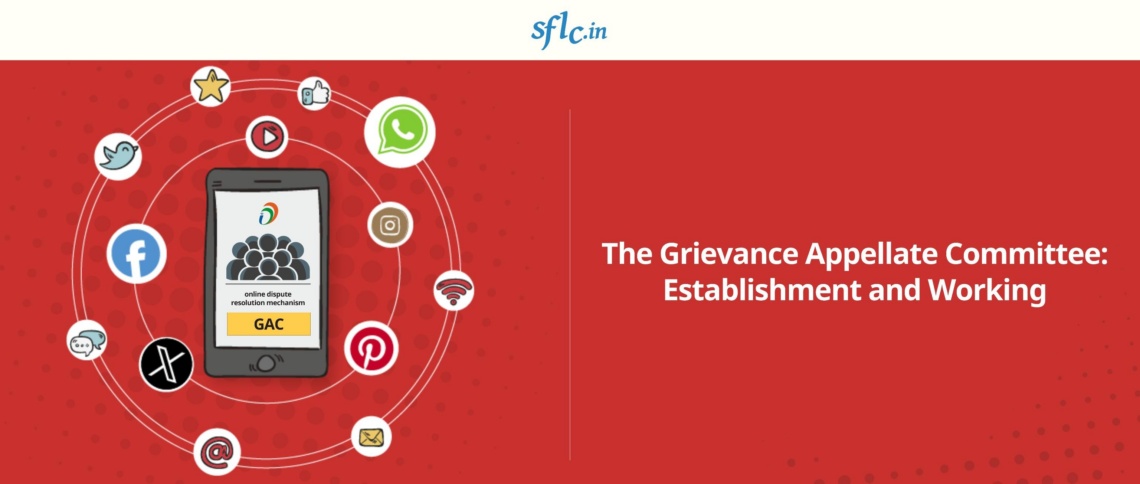While the ubiquitous presence of pornographic content on the internet is just another fact of life to the average internet user, two petitions that seek to restrict internet porn in India have been steadily gaining traction in media circles:
- In a petition currently pending before the Supreme Court of India, an Indore-based lawyer – Kamlesh Vaswani – argues that pornography greatly harms contemporary Indian society. It is said that the internet allows access to extremely graphic, violent and brutal forms of pornography that in turn lead to the commission of aggravated sexual offences against women and children, and a host of statistics are cited in support of this fact. Mr. Vaswani feels that existing provisions within the Information Technology Act meant to keep internet porn in check fail to do so, since the Act is primarily meant to promote e-commerce and e-governance. He therefore prays that these provisions (namely Sections 66, 67, 69, 71, 72, 75, 79, 80 and 85) be declared ultra vires of the Constitution, and a separate legislation, National Policy and draft action plan be formulated to curb the problem once and for all. In addition, Mr. Vaswani prays that the watching/sharing of pornographic videos be treated as non-bailable cognizable offences.
- On a similar note, a petitionpending before the Rajya Sabha Committee on Petitions laments the corrupting influences exerted by internet porn over Indian youth and states that it leads to several psycho-physical problems like sexually transmitted diseases and sexual deformities. It also argues that ‘Cyber Pornography’, which has been made more accessible by advanced technology, leads to sexual exploitation of children. To address the problem, the petition asks that:
- The IT Act be amended, criminalizing the production, distribution and viewership of hardcore/extreme pornography
- Porn-filters be provided free of cost by the Government to PC owners and cyber cafes
- ISPs be compelled to block internet porn
- Comprehensive guidelines be issued by the Telecom Regulatory Authority of India to service providers in order to curb the viewing of internet porn on mobile devices
- A Cyber Police Force be established under the National Investigation Agency
This petition is currently under consideration by the Committee, pursuant to which the Committee will call for formal comments from the concerned Ministries/Departments based on its findings. The Ministries/Departments will then either take action based on the Committee’s findings, or revert with reasons as to why such action is untenable.
Both the above petitions seek to put an end to the perceived menace of internet porn in the country, albeit through very different means. Where Kamlesh Vaswani proposes an outright ban on all pornographic material, criminalizing its viewership in the process, the petition before the Rajya Sabha Committee envisages a somewhat reserved approach involving criminalization of the more extreme varieties of internet porn, backed by filters and ISP-level blocks. As the Supreme Court and the Rajya Sabha Committee deliberate over these petitions and contemplate possible courses of action, it would do well to take a brief look at the current legal treatment of internet porn in the country.
While there are no direct references to the term ‘pornography’ under any Indian legislation, it indirectly finds mention in several. Section 292 of the Indian Penal Code (IPC) prohibits the production and distribution of any material that is deemed obscene. As per the Section, any material is deemed obscene if it is ‘lascivious’ or ‘appeals to the prurient interest’, or if it tends to deprave or corrupt any person likely to come across such material. Similarly, Sections 67 and 67A of the Information Technology Act (IT Act) prohibit the electronic publication of obscene and sexually explicit material, and the Indecent Representation of Women (Prohibition) Act (IRWPA) prohibits the production and distribution of material, where women are depicted in an indecent manner. The term ‘indecent representation of women’ is defined by the IRWPA as the depiction of women in such a way as to have the effect of being indecent, derogatory or denigrating women, or is likely to deprave, corrupt or injure public morals. Contraventions of the above provisions are punishable with varying terms of imprisonment and fines. Conspicuously exempted from the list of punishable offences however, is private viewership of pornographic material. This means that while an Indian citizen is barred from producing, distributing or publishing pornographic material in any manner, he would be perfectly within his rights when accessing it in his personal capacity. However, the production, distribution and even viewership of child pornography is heavily punished by the Information Technology Act and Protection of Children from Sexual Offences Act.
There have been several instances, where the Government of India has blocked certain websites from public access – reportedly on the basis of complaints received from the general public. For instance, a popular erotic web comic Savita Bhabhi, which followed the sexual escapades of an Indian housewife was blocked in 2009 pursuant to orders from the Department of Telecommunications. Again, June 2013 saw the blocking of a series of online forums and image boards with pornographic content, though some of the blocked websites also had non-pornographic content. These orders are issued directly to the Internet Service Providers, yet they do not cite any reasons for the block or specify the particular provisions of law under which the orders are issued. According to a report that appeared on a national newspaper in June 2013, DOT officials claim that the Department is merely following orders issued by the Cyber Security Co-ordination Committee and hence cannot talk about the specific reasons behind the blocks. Interestingly though, there is no such entity as the Cyber Security Co-ordination Committee in existence in India, which means the reasons/authority behind the DOT’s orders remain unknown.
This administrative lack of clarity might be traced back in part to the very nature of the internet – which poses significant challenges to any attempt at regulation of content – coupled with the general unfamiliarity on part of a majority of Indian public officials regarding the internet and its functioning. Further, as the internet is a global network that spans multiple trans-national jurisdictions with widely differing laws, pornography that is legally distributed under the laws governing the distributor might be illegally consumed under laws governing the consumers. This will be better illustrated by a brief look at how some international jurisdictions attempt to regulate internet porn.
In the United States, the legal treatment of pornography tends to be rather liberal. While there are no laws that permit or prohibit internet porn in particular, pornography per se (including internet porn) is not banned unless it involves sexually explicit depictions of minors. Its production, distribution and consumption are also protected by the First Amendment to the Constitution that guarantees US citizens the right to free speech. However this protection under the First Amendment does not extend to obscene porn, whose production and distribution are prohibited, though private possession is allowed. Whether a given pornographic ‘work’ may be termed obscene will be determined by applying what is known as the Miller test (the three-prong obscenity test), which was developed by the US Supreme Court in the landmark case of Miller v. California. This test poses three fundamental questions about the work under scrutiny:
- Whether the average person, applying ‘contemporary community standards’, would find that the work, taken as a whole, appeals to the prurient interest
- Whether the work depicts or describes, in a patently offensive way, sexual conduct specifically defined by applicable state law
- Whether the work, taken as a whole, lacks serious literary, artistic, political, or scientific value
The first two prongs of the Miller test are held to the standards of the community, and the last prong is held to what is reasonable to a person of the United States as a whole. The national reasonable person standard of the third prong acts as a check on the community standard of the first two prongs, allowing protection for works that might be considered obscene in a certain community, but might have redeeming value on a national level.
The United Kingdom on the other hand prohibits the publication of all obscene material under the Obscene Publications Act, where obscenity is understood in consonance with J. Cockburn’s test laid down in the 1868 House of Lords decision in R v. Hicklin (“whether the tendency of the matter charged as obscenity is to deprave and corrupt those whose minds are open to such influences, and into whose hands a publication of this sort may fall“). Aside from the prohibition on publication of obscene material, recently proposed changes to UK law will – if implemented – mandate ISPs to block access to pornographic websites unless customers specifically request access. Though the law itself has yet to be amended to this end, this ‘default-on’ filter mechanism has already been deployed by several ISPs. In addition, even the possession of ‘extreme pornographic images’ i.e. depictions of sexual acts that threaten life or involve risk of serious injury, is now a punishable offence under the Criminal Justice and Immigration Act of 2008.
Iceland had its own flurry of debates surrounding the permissibility of pornography, when a proposal to ban the production and distribution of pornographic material was floored by the Icelandic Government in 2013. Though the production and distribution of pornographic material has been illegal in Iceland for quite some time now, the term ‘pornography’ was not clearly defined under law, with the effect that the prohibition was never enforced in earnest. The 2013 proposal intended to change all that by clearly defining the contours of what would be considered pornographic and doubling down on the prohibition against such material. A porn-filter (not unlike Britain’s) was one of the alternatives considered towards restricting access to internet porn to the Icelandic citizenry. However, the proposal to outlaw pornography seems to have since been abandoned in the face of staunch resistance to the idea from the general public.
While internet porn is regulated across jurisdictions in multiple ways spanning an entire spectrum in terms of severity, such widely differing legal treatment of one global network foreseeably gives rise to several administrative challenges, the least of which is ensuring compliance with local laws. Factoring in the relative ease with which restrictions that limit access to any online content may be circumvented, one cannot help but wonder if a blanket-ban on internet porn as envisaged by the previously mentioned petitions is likely to have any effect on the actual viewership of pornography. Further, any attempt at bulk censorship is also certain to inflict collateral damage in terms of unnecessary censorship of content meant for legitimate public good. This has already been demonstrated to be a very real possibility when UK’s porn filters inadvertently blocked access to a number of sexual education/medical websites. More importantly, criminalizing the private viewership of internet porn will compromise the citizens’ right to privacy, as ensuring compliance with such laws would involve monitoring online activities of citizens. This could result in the establishment of highly intrusive monitoring mechanisms, adding significantly to the Government’s surveillance avenues and the possibility of abuse of power by enforcement agencies.
In any case, the time is ripe to start a wider, more mature discussion on such attempts to expend our resources on sneaking into people’s bedrooms.



